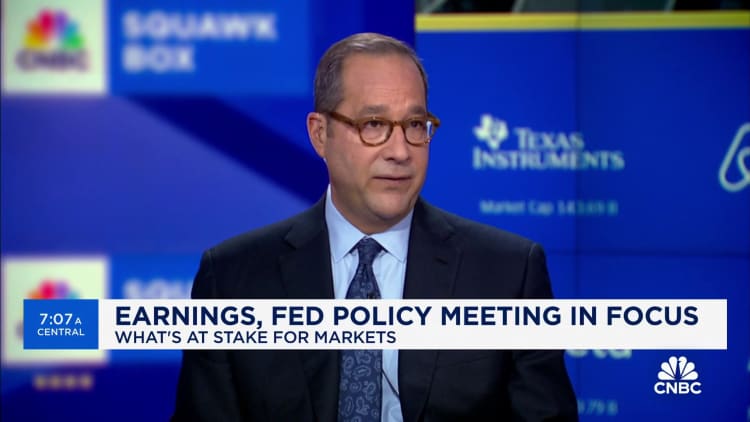Jitalia17 | E+ | Getty Images
Series I bonds will pay 4.28% annual interest from May 1 through October 2024, the U.S. Department of the Treasury announced Tuesday.
Linked to inflation, the latest I bond rate is down from the 5.27% annual rate offered since November and slightly lower than the 4.3% from May 2023.
Current I bond owners will also see their rates adjust, depending on when they bought the assets. There’s a six-month timeline for rate changes, which begins on the original purchase date.
More from Personal Finance:
Advice about 401(k) rollovers is poised for a big change. Here’s why
IRS free filing pilot processed more than 140,000 returns, commissioner says
Here’s why new home sales inch higher despite 7% mortgage rates
Despite falling rates, the I bond’s fixed-rate portion is still “very attractive” for long-term investors, said Ken Tumin, founder of DepositAccounts.com, which closely tracks these assets.
How I bond rates work
There are two parts to I bond rates — a variable- and fixed-rate portion — which the Treasury adjusts every May and November. The history of both rates is here.
Based on inflation, the variable rate stays the same for six months after purchase, regardless of when the Treasury announces new rates.
After the first six months, the variable yield changes to the next announced rate. For example, if you bought I bonds in September of any given year, your rates change each year on March 1 and Sept. 1, according to the Treasury.
By comparison, the fixed rate, which is harder to predict, stays the same after purchase. Every May and November, the Treasury can adjust or keep the fixed rate the same.
Still ‘great’ for long-term investors
Millions of investors piled into I bonds after the annual rate hit a record 9.62% in May 2022, and rates have since fallen amid cooling inflation.
Currently, short-term savers have better options for cash. But I bonds could still appeal to long-term investors, according to Milwaukee-based certified financial planner Jeremy Keil at Keil Financial Partners.
“The only reason you’re buying I bonds is for the fixed rate,” which is 1.3% for new purchases from May 1 through October, he said.
Long-term savers may also like the tax benefits, said Tumin. There are no state or local levies on interest and you can defer federal taxes until redemption.
“It’s great for long-term holdings of your emergency fund,” Keil added.
Of course, you need to consider your goals and timeline before purchasing. One of the downsides of I bonds is you can’t access the money for at least one year and there’s a three-month interest penalty if you tap the funds within five years.
You can buy I bonds online through TreasuryDirect, with a $10,000 per calendar year limit for individuals. However, there are ways to purchase more, including $5,000 in paper I bonds via your federal tax refund.
Frequently asked questions about I bonds
1. What’s the interest rate from May 1 to Oct. 31, 2024? 4.28% annually.
2. How long will I receive 4.28%? Six months after purchase.
3. What’s the deadline to get 4.28% interest? Bonds must be issued by Oct. 31, 2024. The purchase deadline may be earlier.
4. What are the purchase limits? $10,000 per person every calendar year, plus an extra $5,000 in paper I bonds via your federal tax refund.
5. Will I owe income taxes? You’ll have to pay federal income taxes on interest earned, but no state or local tax.
Credit: Source link




